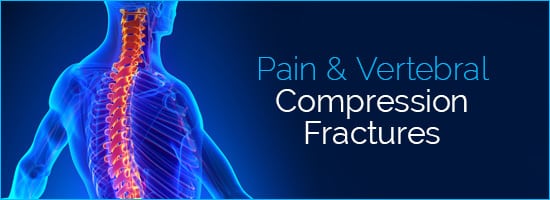
Vertebral compression fractures occur when a vertebral body in the spine collapses. This is most common in the middle (thoracic) spine, but can occur anywhere.
These types of fractures are most commonly due to aging because of osteoporosis, or bone loss. Osteoporosis affects 10 million Americans, and 8 million women and 2 million men with osteoporosis suffer from vertebral compression fractures. It is the most common fracture that osteoporosis patients deal with, and can happen with simple activities such as lifting or stepping out the shower.
If you have a healthy spine and no osteoporosis, the cause for vertebral compression fracture is more likely to be a car accident, hard fall, or metastatic tumor. If you have one vertebral compression fracture, you are five times more likely to have another, even if you do not suffer from symptoms.
Symptoms
The most common symptoms of vertebral compression fractures are sudden pain that worsens when walking or standing and limited mobility. Eventually, height loss and deformity can occur. If the spinal cord is affected by the fracture, neurological complications can arise.
Vertebral compression fractures are diagnosed after a physical exam and imaging tests, such as x-rays, CT scans, and MRIs. Treatment is important in order to allow the fracture to heal.
Treatments
It is possible for vertebral compression fractures to heal over time with activity modifications and rest. Non-steroidal anti-inflammatory medications can help to relieve pain, and prescription pain medications can help as well. Wearing a back brace can help to limit motion and allow the fracture to heal. Your doctor may prescribe medications to help strengthen your bones.
If these treatments are not helpful, your doctor might recommend a minimally invasive procedure. One of these options is vertebroplasty, which involves injecting acrylic bone cement into a collapsed vertebra in order to stabilize the fracture.


